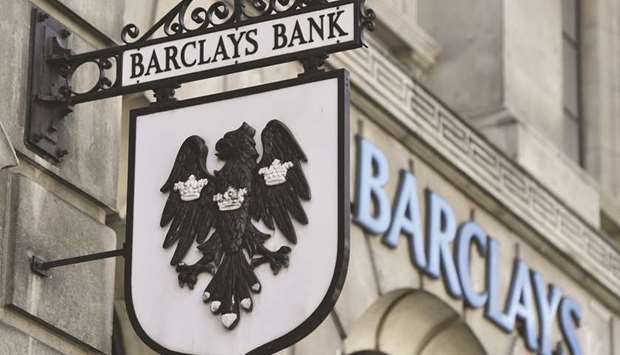European lenders are wrapping up their final bond sales of the year, taking advantage of strong issuance conditions that could turn sour if investors’ risk appetite disintegrates.
Ahead of the seasonal pickup in bond issuance after the summer, Europe’s banks have already raised more than 75% of their funding targets for 2019, according to data compiled by Bloomberg.
Some of the region’s largest lenders such as Barclays Plc, BNP Paribas SA and Deutsche Bank AG are even further ahead of schedule, having raised at least 80% of their targets for the year.
And only last week, deals from Danske Bank, Swedbank and Belfius Bank met with strong investor demand. ING Group NV and HSBC France SA are among the banks to pile into the euro market yesterday.
While fresh central bank stimulus is likely to keep driving activity, there are some clouds on the horizon that could trigger bouts of market volatility. The prospect of a no-deal Brexit on October 31 looms large while trade tensions and political uncertainty in other European nations all pose potential challenges to borrowers.
“Volatility could still pick up in the coming months, resulting in higher new issue premiums,” said Vaclav Vacikar, a credit analyst at Rabobank Nederland. “For now, however, it looks like smooth sailing.” Here we take a look at which banks may be the most, and least, active in Europe’s primary market between now and year-end:
ABN Amro: The bank Has raised just €5bn ($5.56bn) year-to-date, compared to €10bn-15bn over previous full years according to a company spokesman, and the bank hasn’t issued a publicly syndicated bond since April, data compiled by Bloomberg show.
Still, in its 2nd quarter report ABN said lower wholesale funding is consistent with an increase in client deposits.
HSBC: Plans to sell AT1s within the next couple of months, based on comments made on its recent fixed-income investor call. Its outstanding AT1s have staged a recent rally after dropping on Hong Kong protests and trade war tensions. HSBC France is marketing an 8-year euro senior bond at an initial targeted price of around 60 basis points over mid-swaps.
Lloyds: Raised $1bn of 3Y Reg S covered notes in Europe’s syndicated market as recently as July, with its global year-to-date issuance topping £10bn-equivalent but still short of its £15bn-£20bn target across both public and private deals. Lender guided analysts towards the lower end of that range on a 1H fixed income call. Lloyds said sales for the rest of this year will focus on secured or higher-rated senior formats, which should be easier to issue amid potential Brexit-related volatility.
Swedbank: The lender sold dollar perpetual Additional Tier 1 notes on Thursday with a coupon of 5.625%.
Follows comments from head of investor relations Gregori Karamouzis last month that Swedbank was “planning to look at the markets” after summer to raise inaugural MREL-eligible debt but could “afford to wait” before bringing a deal, given its solid liquidity position.
Spreads on Swedbank’s euro 2022 notes have rallied since April.
Santander: It has already met minimum funding targets for 2019 across covered and senior debt sales, according to targets outlined in a 1H fixed income presentation.
Credit Suisse: The bank has met its target of raising between 1-2bn Swiss francs of AT1 notes this year. The bank announced yesterday a Swiss franc-denominated perpetual note.
Others: Barclays Plc, BNP Paribas SA and UniCredit SpA have each met between 80% to 90% of full-year funding targets, based on publicly-disclosed numbers from the banks.
Deutsche Bank has completed 80% of its funding after revising down its target to 10-12bns euros from 15-20bn following its strategy update.
Danske Bank’s €1bn senior trade last Tuesday – issued the same day the lender announced a NOK-denominated covered bond – boosted its debt issuance for the year to 73bn Danish krone and around 80% of its 90bn krone 2019 target.

A Barclays sign hangs outside a branch of the bank in the City of London. Ahead of the seasonal pickup in bond issuance after the summer, Europe’s banks such as Barclays, BNP Paribas and Deutsche Bank have raised more than 75% of their funding targets for 2019, according to data compiled by Bloomberg.


